Scaffolding Companies Chain Lake
Find the best Scaffolding Experts in Chain Lake
Receive up to 3 Construction Scaffolding quotes for your project today! Compare profiles, reviews, accreditations, portfolio, etc... and choose the best deal.

Performance Contracting Inc
4.218 reviews3136 B Street NW, Auburn, 98001, USPerformance Contracting, Inc. (PCI) is a leading specialty contractor in the United States, offering a wide range of services and products to industrial, commercial, and non-residential sectors. With a strong focus on safety, PCI's 'Target Zero Incidents' safety program ensures a secure and efficient work environment for all projects. The company's commitment to excellence and customer satisfaction sets them apart as a trusted industry leader.
- Services
- Why Us?
- Accreditations
- Our Team
- Testimonials
- Gallery
Get Quote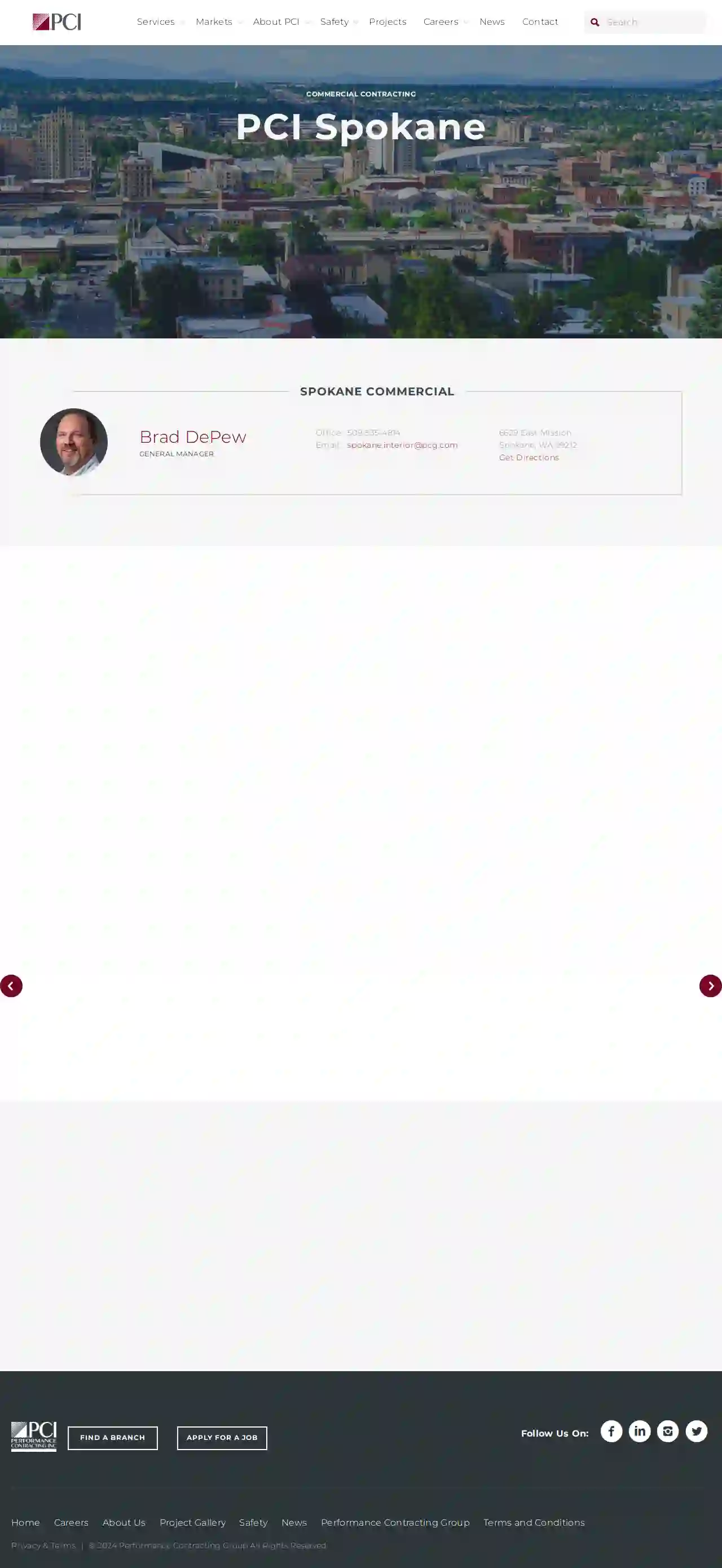
Performance Contracting
48 reviews6629 East Mission, Spokane, 99212, USPerformance Contracting, Inc. is a leading specialty contractor in the United States, providing a wide range of services to industrial, commercial, and non-residential sectors. With over 60 years of experience, PCI delivers top-tier construction services, focusing on creativity, innovation, and customer satisfaction. The company's commitment to safety, quality, and craftsmanship sets it apart from competitors, making it a trusted partner for clients across the country.
- Services
- Why Us?
- Accreditations
- Our Team
- Testimonials
- Gallery
Get Quote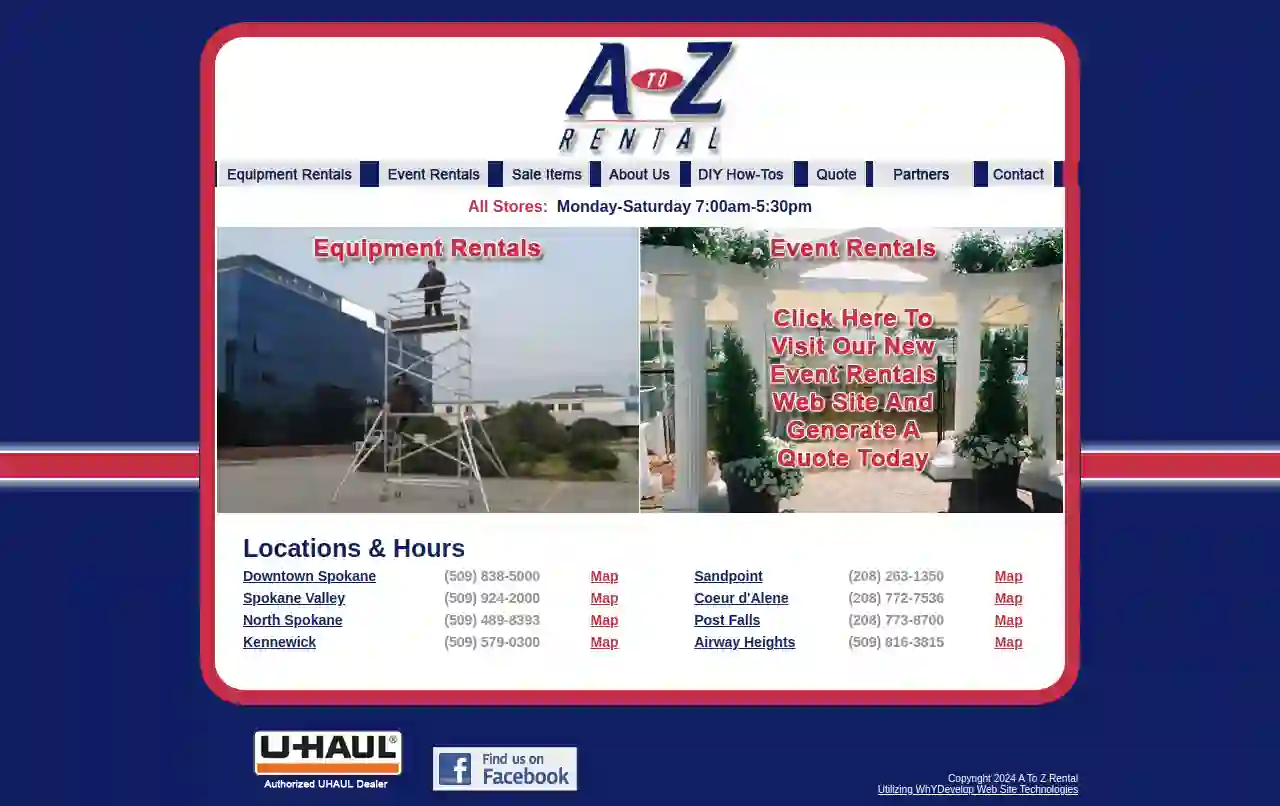
A to Z Rental
4.1204 reviewsSpokane, USA To Z Rental: Your One-Stop Shop for Equipment Rentals A To Z Rental is your trusted source for a wide range of equipment rentals in the Inland Northwest. We offer a diverse selection of tools and machinery to meet your needs, whether you're a homeowner tackling a DIY project, a contractor working on a large-scale construction project, or an event planner bringing your vision to life. Our Commitment to Excellence At A To Z Rental, we are committed to providing our customers with exceptional service and high-quality equipment. Our team of experienced professionals is dedicated to helping you find the right tools for the job and ensuring your satisfaction. We also offer competitive rates and flexible rental options to fit your budget and timeline. Our Services We offer a wide range of equipment rentals, including: Aerial Access & Scaffolding Automotive Breaking & Drilling Cleaning & Floor Care Concrete & Compaction Cooling Drying & Heating Earthmoving & Site Works Fastening Carpentry & Sanding Landscape & Yard Work Material Handling Painting & Surface Preparation Power Lighting, Generators & Welding Pumping & Plumbing Sawing Cutting & Grinding Trailers Barbeques, Griddles and Burners Beverage Service Carnival/Party Games Catering And Buffet Equipment China, Glassware, And Flatware Convention and Expo Decorative Accessories Gazebos And Arches Guest and Medical Accommodations Heating, Cooling and Lighting Linens, Table Toppers Staging, And Dance Floor Tables, Chairs and Leather Furniture Table Top Accessories Tents Trays and Serving Pieces Our Locations We have multiple locations throughout the Inland Northwest to serve you better. Find the location nearest you and visit us today!
- Services
- Why Us?
- Gallery
Get Quote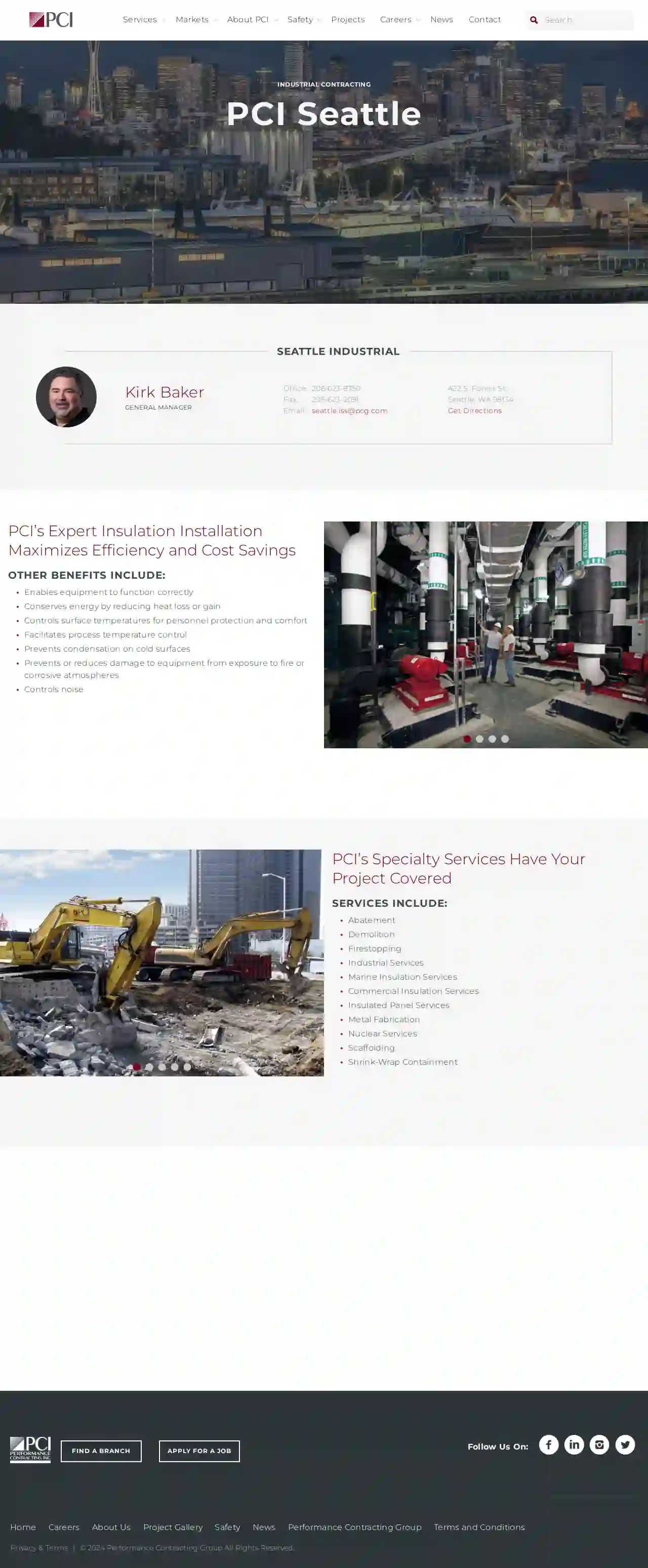
Performance Contracting Inc
4.97 reviews422 S. Forest St., Seattle, 98134, USAs a top-tier specialty contractor in the United States, Performance Contracting, Inc. takes pride in providing a comprehensive range of solutions and services to our valued clients. Our expertise and commitment to excellence ensure that we consistently meet and exceed customer expectations, setting the standard in the construction industry. With over 60 years of industry experience, PCI expertly delivers innovative solutions tailored to the specific needs of diverse market sectors. Our vast expertise and dedication to addressing unique challenges ensure that every project benefits from our proven track record. As an employee-owned company, we've been at the forefront of the commercial and industrial sectors, providing a vast range of services that have made us leaders in the industry. Our drive to be creative and trailblazing is what sets us apart.
- Services
- Why Us?
- Our Team
- Gallery
Get Quote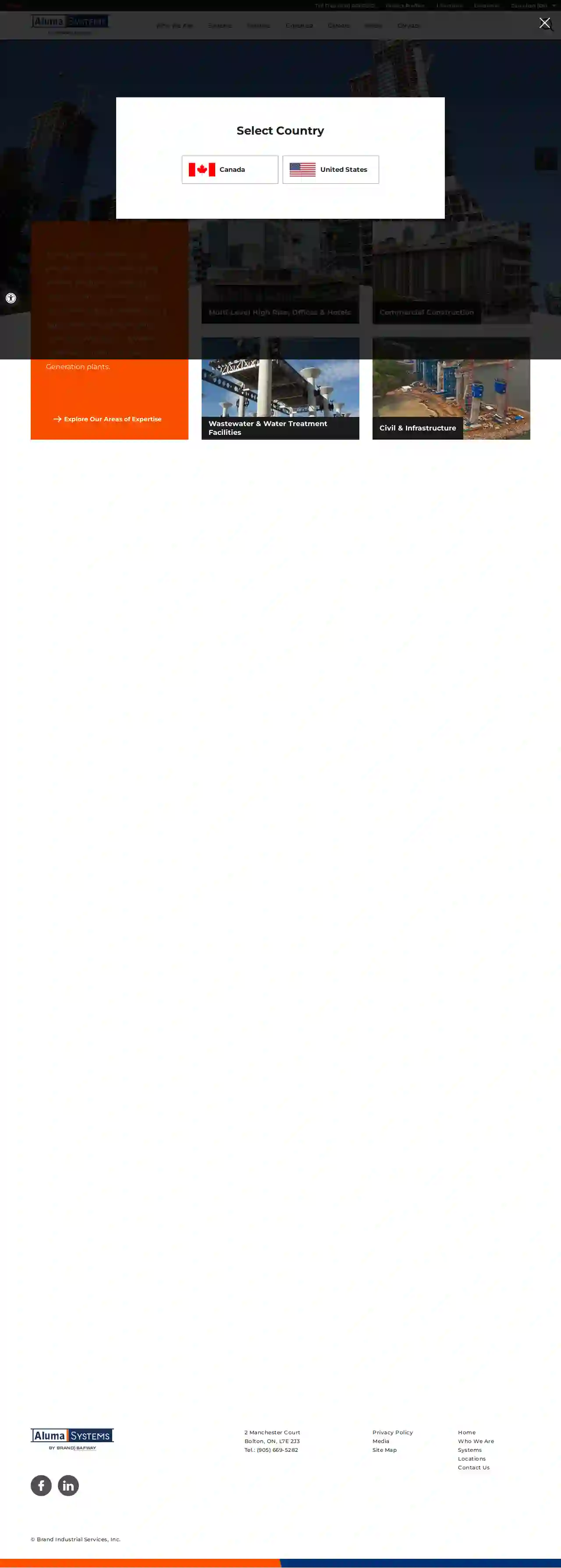
Aluma Systems (Concrete Construction)
318 reviewsBolton, ON, 2 Manchester Court, L7E 2J3, USAt Aluma Systems, we deliver high-efficiency concrete forming and shoring solutions to projects ranging from Commercial & High-Rise construction to Infrastructure applications like Transportation Terminals, Wastewater & Water Treatment Facilities & Power Generation plants. With more than 360 locations in 27 countries, we're everywhere you need us to be.
- Services
- Why Us?
- Accreditations
- Gallery
Get Quote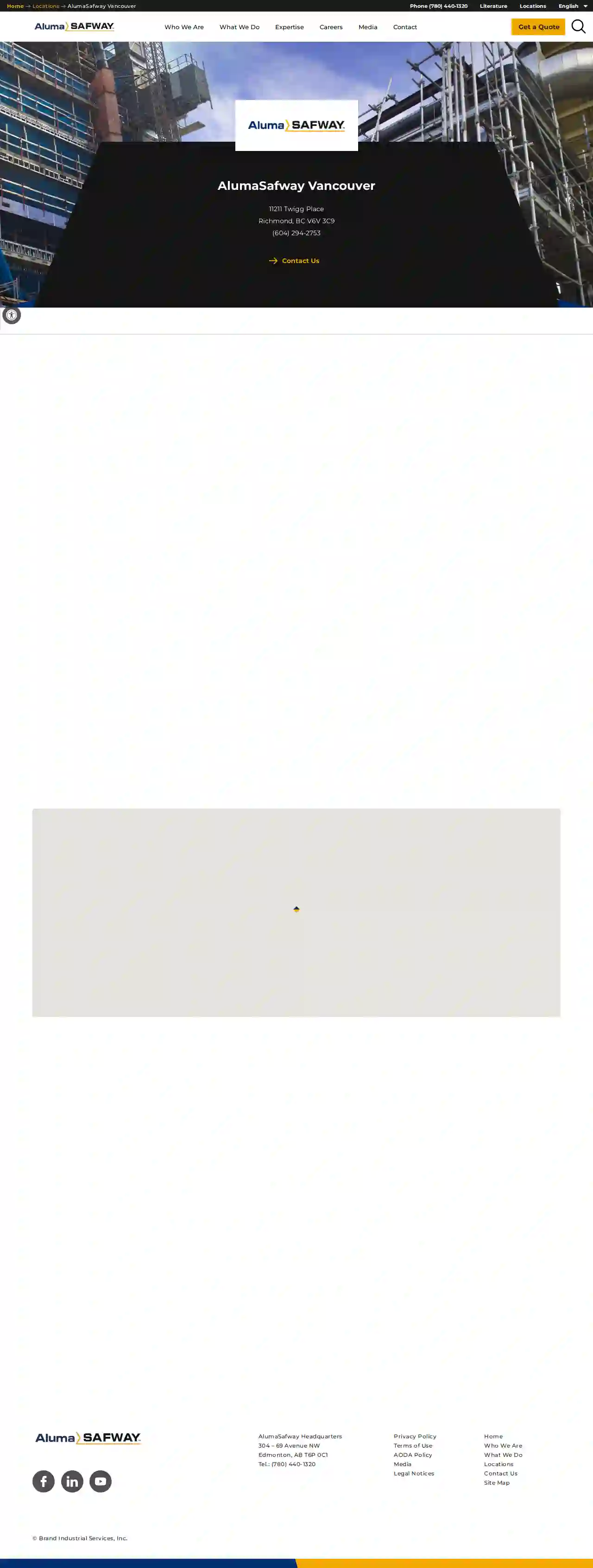
AlumaSafway Vancouver
3.311 reviewsRichmond, BC, 11211 Twigg Place, V6V 3C9, USAlumaSafway is a leading global provider of access, specialized services, and forming and shoring solutions to the industrial, commercial and infrastructure end markets in Canada. With the broadest range of solutions and the greatest depth of expertise, our Vancouver, British Columbia, location is ready to serve you. We provide scaffold for sale and rental, forming and shoring solutions, comprehensive commercial and industrial services, and best-in-class safety to the oil and gas, power generation, civil and infrastructure, and commercial construction industries throughout Canada.
- Services
- Why Us?
- Gallery
Get Quote
Canada Scaffold Supply Co. Ltd.
4.722 reviews11331 Twigg Place, Richmond, V6V 3C9, USCanada Scaffold Supply is an industry leading scaffolding company located in Richmond, BC, in operation since 1974. Offering a range of services including scaffold, shoring, swing stage, structural steel, event rentals, temporary fencing, portables, and tank services. Our team is dedicated to providing exceptional service and quality products.
- Services
- Why Us?
- Accreditations
- Testimonials
- Gallery
Get Quote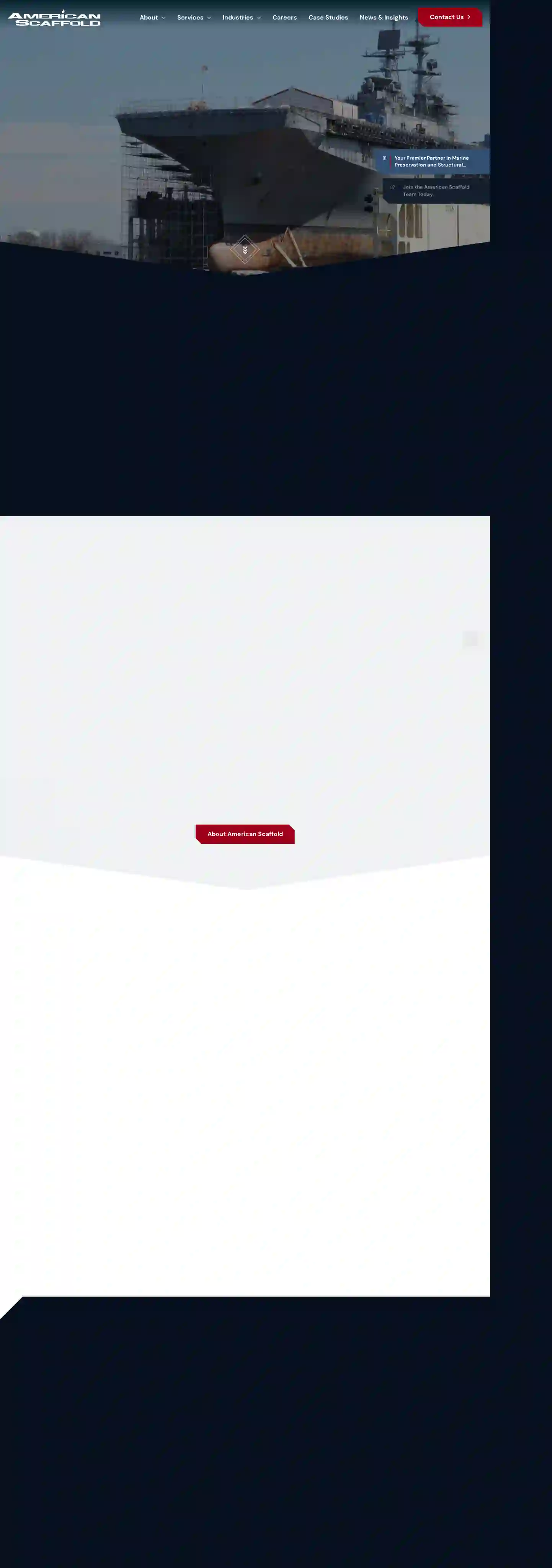
American Scaffold
4.716 reviewsDaphne, AL, PO Box 2364, 36526, USAmerican Scaffold is a premier provider of comprehensive scaffold solutions, offering a wide range of staging and containment products. With a strong infrastructure, national presence, and financial backing, the company can quickly scale up to support large projects, efficiently handling significant demands. The team is dedicated to delivering top-notch results, ensuring customers receive unparalleled service and the highest quality outcomes. Known for quality, prompt service, and efficient problem solving, American Scaffold's scaffolds and containment systems are strategically located nationwide and available for immediate delivery.
- Services
- Why Us?
- Testimonials
- Gallery
Get Quote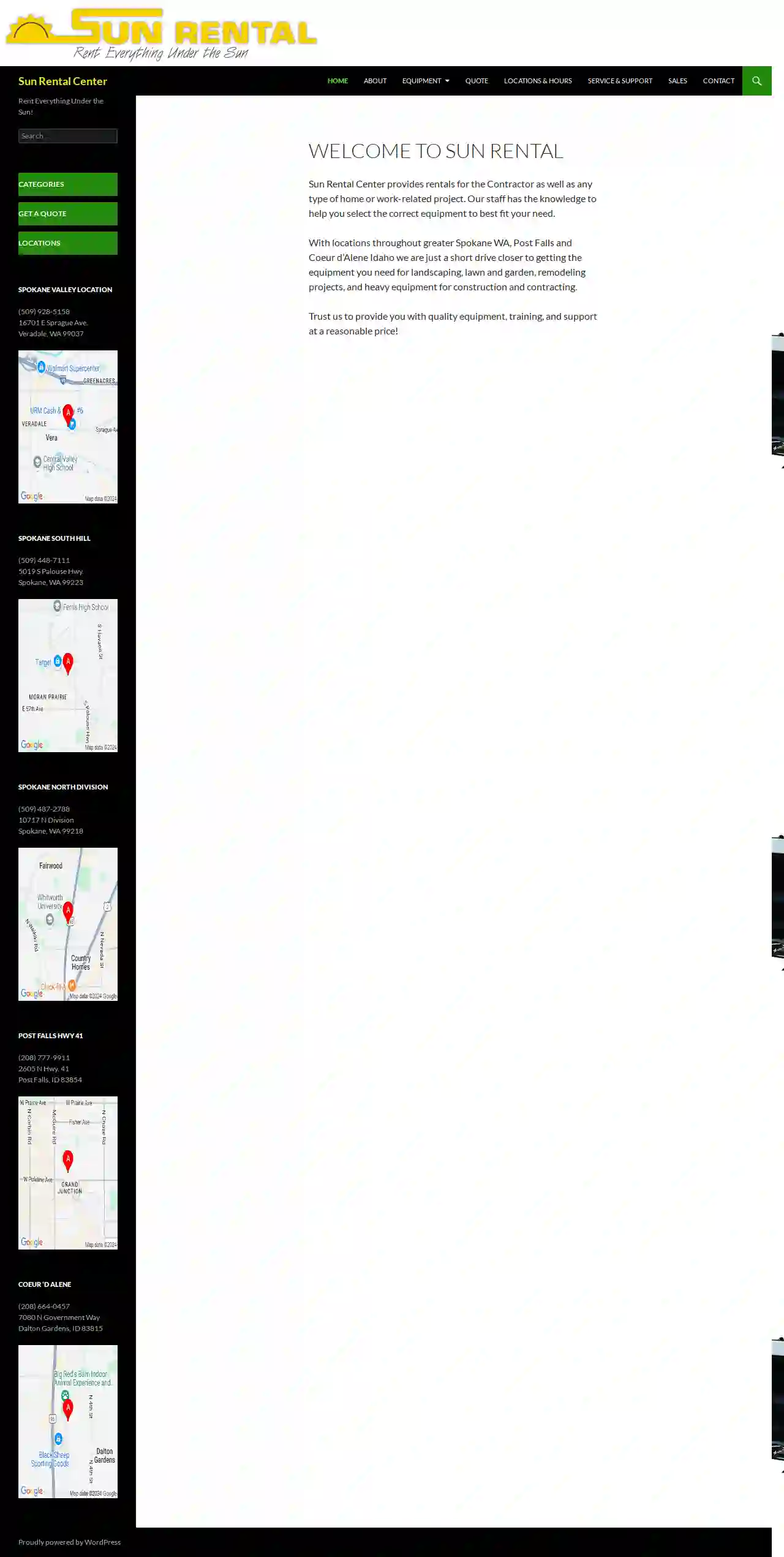
Sun Rental Center
4.118 reviews16701 E Sprague Ave., Veradale, 99037, USWelcome to Sun Rental Sun Rental Center provides rentals for the Contractor as well as any type of home or work-related project. Our staff has the knowledge to help you select the correct equipment to best fit your need. With locations throughout greater Spokane WA, Post Falls and Coeur d’Alene Idaho, we are just a short drive closer to getting the equipment you need for landscaping, lawn and garden, remodeling projects, and heavy equipment for construction and contracting. Trust us to provide you with quality equipment, training, and support at a reasonable price!
- Services
- Why Us?
- Our Team
- Gallery
Get Quote
Matakana Scaffolding B.C. Inc.
3.421 reviews5288 Still Creek Ave, Burnaby, V5C 4E4, USMatakana Scaffolding Inc. is a trusted leader in the scaffolding sector, operating from their central office in Vancouver, British Columbia, Canada. Established in 2002, Matakana has built a strong reputation for creating innovative scaffold access, staging, and weather containment solutions. Their globally experienced team has the capabilities to address the diverse and complex challenges commonly encountered in the construction industry. Known for quality and reliability, Matakana handles a wide range of projects, across residential, commercial, and industrial job sites. They specialize in the delivery of innovative scaffolding solutions for complex construction access situations.
- Services
- Why Us?
- Gallery
Get Quote
Over 2,353+ Scaffolding Companies on our platform
Our scaffolding pros operate in Chain Lake and surroundings!
ScaffoldingHQ has curated and vetted Top Scaffolding Businesses arround Chain Lake. Find the most reliable contractor today.
Frequently Asked Questions About Scaffolding Companies
- Licensing and Insurance: Verify their licenses are current and that they have adequate insurance coverage.
- Experience: Choose a company with a history of successfully completing similar projects. Ask for references and check their portfolio.
- Safety Record: Inquire about their safety practices and accident history. A strong safety culture is essential.
- Professionalism: Observe their communication, responsiveness, and attention to detail. A reputable company will be organized and transparent.
- Reviews and Testimonials: Read online reviews and feedback from previous clients to assess their reputation.
- Industry Affiliations: Membership in professional organizations like the NASC (National Access & Scaffolding Confederation) indicates a commitment to industry standards.
- Mobile Elevated Work Platforms (MEWPs): Scissor lifts, boom lifts, and other MEWPs offer flexible access for specific tasks.
- Mast Climbing Work Platforms (MCWPs): Ideal for high-rise construction, providing a stable working platform that can be raised incrementally.
- Suspended Access Equipment: Ropes and harnesses used for specific tasks like window cleaning or façade repairs.
- Ladders and Step Ladders: For shorter durations and limited working heights, provided they are used safely and appropriately.
- Tube and Clamp Scaffolding: A traditional and versatile system using individual tubes and clamps. It's highly adaptable but requires more time to erect.
- System Scaffolding: Pre-engineered systems with modular components that fit together quickly. They offer speed and efficiency, especially for larger projects.
- Suspended Scaffolding: Hung from a roof or overhead structure, ideal for high-rise buildings or areas with limited ground access.
- Mobile Scaffolding: Mounted on wheels, allowing easy movement around a worksite. Suitable for tasks like painting or plastering.
- Specialized Scaffolding: Cantilever scaffolding, rolling towers, and other specialized systems cater to specific needs.
- Workers: Consider the number of workers on the scaffolding at any given time.
- Materials: Include the weight of building materials, tools, and equipment being used on the platform.
- Environmental Factors: Factor in potential loads from wind or snow, especially for taller scaffolding structures.
How do I know if a scaffolding company is reputable?
What are some alternatives to traditional scaffolding?
What are the different types of scaffolding?
What is the weight limit for scaffolding?
How do I know if a scaffolding company is reputable?
- Licensing and Insurance: Verify their licenses are current and that they have adequate insurance coverage.
- Experience: Choose a company with a history of successfully completing similar projects. Ask for references and check their portfolio.
- Safety Record: Inquire about their safety practices and accident history. A strong safety culture is essential.
- Professionalism: Observe their communication, responsiveness, and attention to detail. A reputable company will be organized and transparent.
- Reviews and Testimonials: Read online reviews and feedback from previous clients to assess their reputation.
- Industry Affiliations: Membership in professional organizations like the NASC (National Access & Scaffolding Confederation) indicates a commitment to industry standards.
What are some alternatives to traditional scaffolding?
- Mobile Elevated Work Platforms (MEWPs): Scissor lifts, boom lifts, and other MEWPs offer flexible access for specific tasks.
- Mast Climbing Work Platforms (MCWPs): Ideal for high-rise construction, providing a stable working platform that can be raised incrementally.
- Suspended Access Equipment: Ropes and harnesses used for specific tasks like window cleaning or façade repairs.
- Ladders and Step Ladders: For shorter durations and limited working heights, provided they are used safely and appropriately.
What are the different types of scaffolding?
- Tube and Clamp Scaffolding: A traditional and versatile system using individual tubes and clamps. It's highly adaptable but requires more time to erect.
- System Scaffolding: Pre-engineered systems with modular components that fit together quickly. They offer speed and efficiency, especially for larger projects.
- Suspended Scaffolding: Hung from a roof or overhead structure, ideal for high-rise buildings or areas with limited ground access.
- Mobile Scaffolding: Mounted on wheels, allowing easy movement around a worksite. Suitable for tasks like painting or plastering.
- Specialized Scaffolding: Cantilever scaffolding, rolling towers, and other specialized systems cater to specific needs.
What is the weight limit for scaffolding?
- Workers: Consider the number of workers on the scaffolding at any given time.
- Materials: Include the weight of building materials, tools, and equipment being used on the platform.
- Environmental Factors: Factor in potential loads from wind or snow, especially for taller scaffolding structures.